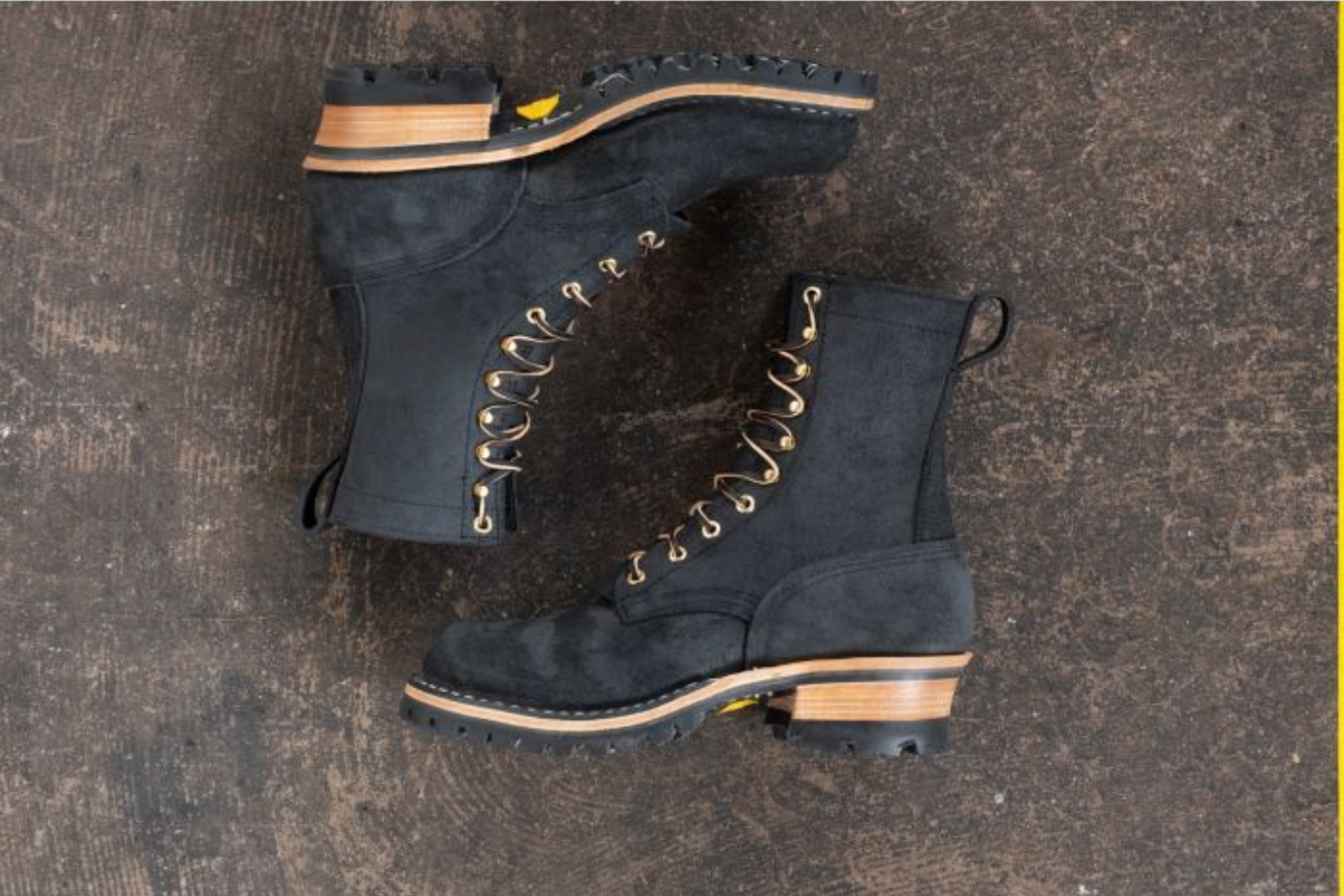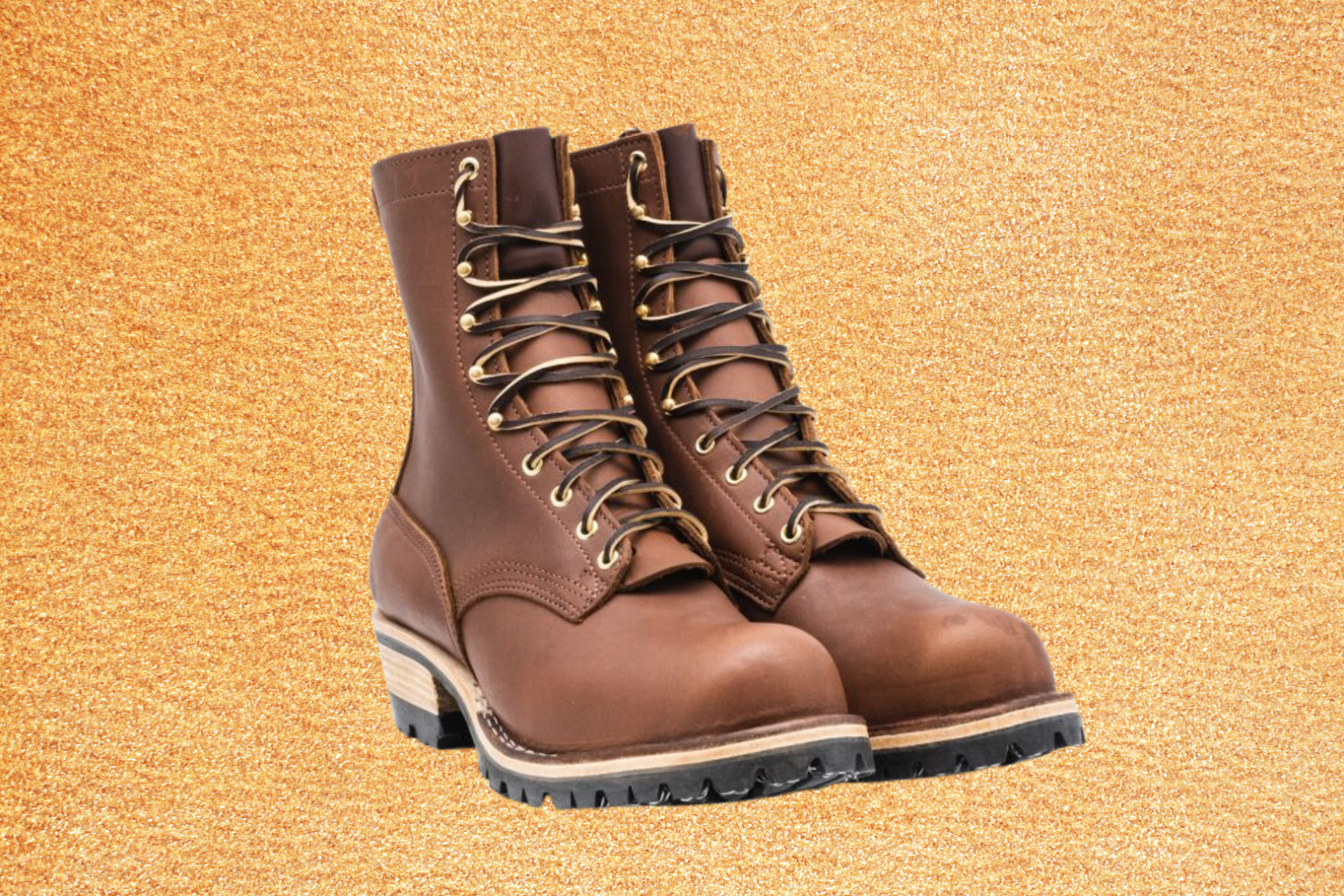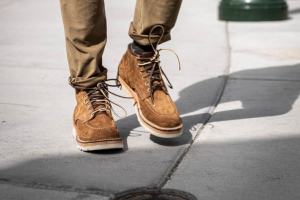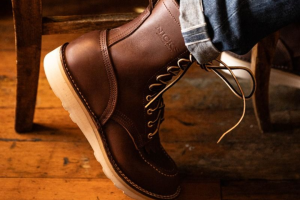The Ultimate Guide To Work Boots: Quality And Comfort Combined

Have you ever wondered where you can find work boots that seamlessly blend uncompromising quality with unparalleled comfort? The search for the perfect work boots is a quest that transcends mere footwear – it's about securing the right companion for your demanding tasks, a partner that stands between you and the challenges of your work environment. In this comprehensive guide, we talk about work boots, unraveling the intricate dance of craftsmanship, innovation, and functionality. From the bustling construction site to the rugged wilderness, your journey to finding work boots that embody excellence starts here.
Elevate your work game with boots that redefine durability and coziness. Our craftsmanship is second to none, ensuring your feet stay protected and pampered all day long. Whether you're on the job site or hitting the town, Nicks Boots has your back... or rather, your feet!
What Are Work Boots?
Work boots are the pinnacle of precision engineering, seamlessly blending comfort, protection, and durability. Beyond their utilitarian design, these specialized foot companions prioritize both safety and comfort, offering cushioned insoles and ergonomic support while guarding against workplace hazards like falling objects and sharp debris.
With each step, work boots serve as a steadfast partner, enabling you to navigate labor-intensive tasks with confidence and ease, knowing that your feet are shielded by a legacy of craftsmanship and unwavering commitment to excellence.


Discover The Legacy Of Nicks Boots: Craftsmanship Beyond CompareAt Nicks Boots, we don't just make leather goods; we craft experiences that withstand the test of time. Our renowned boots, beloved for their durability and timeless style, carry with them a legacy of excellence. Join us in celebrating the art of craftsmanship, where every stitch and every contour tells a story of dedication and skill. Unveil the Nicks Boots Difference:
As you explore the world of crafted boots and leather goods, remember that Nicks Boots is here to offer you more than just a product – we offer you a piece of history crafted with unwavering dedication and love for our trade. |
Why Are Work Boots Important?
Work boots hold significant importance beyond being mere footwear, serving as reliable companions in the face of challenging terrains and demanding tasks. Their value goes beyond aesthetics, as they provide essential protection against potential hazards while ensuring comfort during prolonged use. With stability and accident prevention as their core features, work boots play an integral role in enhancing productivity and overall well-being, instilling unwavering confidence as you navigate your work.
How Do Work Boots Work?
These boots are a marvel of engineering, skillfully integrating advanced features to excel in diverse work environments. Crafted from durable materials like full-grain leather, they boast reinforced toe caps that serve as the initial defense against hazards. Complemented by slip-resistant outsoles, they offer secure traction even on hazardous surfaces.
What Are The Benefits Of Work Boots?
Investing in a pair of quality work boots comes with a plethora of benefits:
Durability
These bad boys are practically immortal. We mean, work boots are like the Chuck Norris of footwear. They laugh in the face of harsh conditions and stay with you for the long haul, saving your hard-earned cash. If you're looking for the epitome of durability, check out Nicks Boots. With our commitment to craftsmanship and quality materials, these boots don't just talk the talk, they walk the walk—through anything.
Protection
Steel toe caps and puncture-resistant soles provide unparalleled protection against potential workplace hazards.
Support
Ever felt like your feet were staging a protest after a long day? Well, work boots are the diplomats that bring peace to that rebellion. They've got your arches and ankles covered, so you can strut around like a champ without feeling like you just ran a marathon.
Comfort
Imagine walking on clouds made of marshmallows – that's the comfort level we're talking about. Cushioned insoles and breathable materials team up to make your feet feel like royalty, no matter what crazy tasks you're up to.
Versatility
These boots aren't just all work and no play. They're the James Bond of footwear, smoothly transitioning from the serious work zone to the cool casual scene. Talk about versatility – these boots are ready for any party.
What Are The Different Types Of Work Boots?
When it comes to work boots, there's no one-size-fits-all solution. Work boots are tailored to suit various job environments and tasks. Whether you're working in construction, agriculture, or a workshop, choosing the right type of work boot can significantly impact your comfort and safety. Let's explore the different types of work boots available to help you make an informed decision.
Steel Toe Work Boots
Steel toe work boots feature a reinforced steel cap over the toe area, providing protection against heavy falling objects or compression hazards.
Composite Toe Work Boots
Similar to steel toe boots, composite toe boots offer protection but use non-metallic materials, making them lighter and more suitable for environments with metal detectors.
Electrical Hazard Work Boots
Designed to reduce the risk of electric shock, these boots have insulation and outsoles that prevent the conduction of electrical currents.
Slip-Resistant Work Boots
These boots have specially designed outsoles to provide traction and prevent slipping on wet or oily surfaces, common in restaurant and kitchen settings.
Waterproof Work Boots
Ideal for wet environments, these boots feature waterproof membranes that keep your feet dry, often combined with other protective features.
What Key Features Should Be Considered In Work Boots?
Selecting the right work boots involves considering various key features that cater to your specific needs and work environment. These features ensure that you receive optimal protection, comfort, and durability throughout your workday.
- Safety Toe: Choose between steel or composite toes based on your job's hazards and your comfort preference.
- Outsole Grip: Look for slip-resistant outsoles that provide traction on various surfaces to prevent accidents.
- Waterproofing: If you work outdoors or in wet conditions, waterproof boots can keep your feet dry and comfortable.
- Arch Support: Proper arch support helps alleviate fatigue during long hours of standing or walking.
- Insulation: Insulated boots are essential for working in cold environments to keep your feet warm and comfortable.
What Are The Materials Used In Work Boot Construction?
The materials used in constructing work boots play a crucial role in their durability, comfort, and protective capabilities. Understanding these materials can help you choose a pair of boots that suits your needs.
Leather
High-quality leather is a staple in work boot construction due to its durability and water-resistant properties. For those who appreciate the finest, Nicks Boots is a standout choice. We specialize in using full-grain leather, the highest quality cut of leather available, ensuring unparalleled durability and water resistance. With Nick's, you're not just getting a boot; you're getting a masterfully crafted piece of footwear designed to last.
Synthetic Materials
Synthetic materials like nylon and polyester are often used to make lightweight and breathable work boots.
Rubber
Rubber is employed in outsoles and certain parts of the boot for its resistance to oil, chemicals, and electrical hazards.
Insulation
Materials like Thinsulate™ are used for insulation, providing warmth without adding excessive bulk.
Metals
Besides steel and composite toes, other metal components enhance the boot's structure and safety features.
How To Achieve The Proper Fit And Comfort In Work Boots?
A comfortable fit is essential for your overall well-being during long workdays. Ill-fitting boots can lead to discomfort, blisters, and reduced productivity. Here's how to ensure you get the right fit and maximum comfort from your work boots.
- Measure Your Feet: Use a Brannock device to measure your feet accurately for both length and width.
- Try Different Sizes: Sizes can vary between brands, so try on multiple sizes and styles to find the best fit.
- Toe Room: Ensure there's enough room for your toes to wiggle without being cramped against the front of the boot.
- Arch Support: Look for boots with adequate arch support that matches the natural curve of your feet.
- Insole Customization: Consider replacing the insoles with orthotic or gel insoles to enhance comfort and support.
For those looking for a truly personalized experience, Nicks Customizable Boots offer the opportunity to tailor every aspect of your boots, from fit to design, ensuring you get the perfect pair for your unique needs.
What Are The Maintenance Tips For Your Work Boots?
Proper maintenance and care can extend the lifespan of your work boots, ensuring they remain effective and comfortable throughout their usage. Regular upkeep can also save you money in the long run by avoiding premature replacements.
Cleaning
Wipe off dirt and debris regularly with a damp cloth to prevent buildup. For a comprehensive cleaning solution, check out Nicks Ultimate Boot Care Kit. It's equipped with everything you need to ensure your boots remain in pristine condition, no matter how often they need a touch-up.
Drying
Allow your boots to air dry naturally after use to prevent odors and mold growth.
Conditioning
Apply leather conditioner to keep the leather soft and prevent cracks.
Waterproofing
Reapply waterproofing products as needed to maintain water resistance.
Sole Inspection
Check the soles for wear and tear, and replace them if needed to maintain grip and safety.
Are There Any Downsides To Work Boots?
While work boots offer numerous advantages, it's essential to consider a few potential downsides:
- Weight: Due to their protective features, work boots can be heavier than regular footwear.
- Break-In Period: Sturdy materials might require a brief break-in period for optimal comfort.
- Style: Some individuals might find work boots to be less stylish for everyday wear compared to other shoe options.
What Are The Alternatives To Work Boots?
If work boots don't align with your preferences, several alternatives are worth exploring:
Hiking Boots
These offer similar durability and support, making them suitable for various outdoor activities.
Athletic Work Shoes
Combining the comfort of athletic footwear with work-ready features, these are ideal for less hazardous environments.
Composite Toe Boots
Composite toe boots provide protection without the metallic components, making them lighter than traditional steel-toed options.
What Is The History Of Work Boots?
The evolution of work boots is a testament to the ever-changing landscape of labor and industry. These boots have a rich history that can be traced back to their humble origins and gradual evolution. Let's journey through time to uncover the story behind these essential pieces of footwear.
- Origins In Industrial Revolution: Work boots emerged during the Industrial Revolution to provide factory workers with necessary foot protection.
- Evolution Of Materials: From simple leather designs to technologically advanced constructions, work boots have evolved to meet changing safety standards and user needs.
- Iconic Styles: Certain work boot styles have become iconic representations of various industries, merging functionality with cultural significance.
What Is The Current Environment For Work Boots Like?
In the modern world, work boots have transcended their initial purpose and have woven themselves into the fabric of various industries. From adhering to strict safety standards to adapting to new work environments, these boots have become more versatile and indispensable than ever before. Explore how work boots continue to play a pivotal role in the contemporary work landscape.
- Safety Regulations: In modern workplaces, strict safety regulations mandate the use of appropriate footwear, driving the demand for high-quality work boots.
- Diverse Applications: Work boots are no longer confined to traditional industries; they find application in fields like hospitality, healthcare, and service sectors.
- Sustainability Focus: With increasing environmental awareness, work boot manufacturers are exploring sustainable materials and production methods.
Frequently Asked Questions
How long do work boots typically last?
The lifespan of work boots depends on factors such as usage frequency, maintenance, and the quality of the boots. On average, they can last between six months to a few years.
Can work boots be resoled or repaired?
Yes, many work boots can be resoled or repaired by professional cobblers. Resoling can extend the life of your boots and is often a cost-effective alternative to purchasing new ones.
Are there vegan or cruelty-free options for work boots?
Absolutely, there are work boots available that are made from synthetic materials, providing vegan and cruelty-free options without compromising on quality or safety.
Can I wear work boots for activities outside of work?
Certainly, modern work boots often blend style and functionality, making them suitable for various activities outside of work. Whether it's hiking, casual outings, or DIY projects, work boots offer versatile wear.
How can I prevent odors and keep my work boots smelling fresh?
To prevent odors, allow your boots to fully air out after each use by removing the insoles and laces and leaving them in a well-ventilated area. Use moisture-wicking socks to help keep your feet dry and minimize odor-causing bacteria. Consider using odor-fighting inserts or insoles designed to absorb moisture and eliminate smells.
Are composite toe boots as safe as steel toe boots?
Composite toe boots are a lighter alternative to steel toe boots and offer comparable safety protection. They are often non-metallic, making them ideal for workplaces with metal detectors, and they also provide insulation against temperature extremes.
Are there specific work boots for people with wide feet?
Yes, many manufacturers offer work boots in wider widths to accommodate people with wide feet. Look for boots with options like "Wide" or "W" in the sizing to ensure a comfortable fit.
What are puncture-resistant soles, and when are they necessary?
Puncture-resistant soles are designed to protect your feet from sharp objects penetrating through the sole. They are particularly important in industries where there is a risk of stepping on nails, glass shards, or other sharp objects.
Can women wear men's work boots and vice versa?
Yes, women can wear men's work boots and vice versa, but it's important to consider differences in foot shape and sizing. Some manufacturers offer unisex sizing options, while others provide specific designs for men and women to ensure the best fit and comfort.
What are metatarsal guards in work boots?
Metatarsal guards are protective elements often integrated into the design of work boots to shield the metatarsal bones (mid-foot) from impacts, compression, and other potential injuries. They provide an extra layer of safety for individuals working with heavy machinery or materials.




